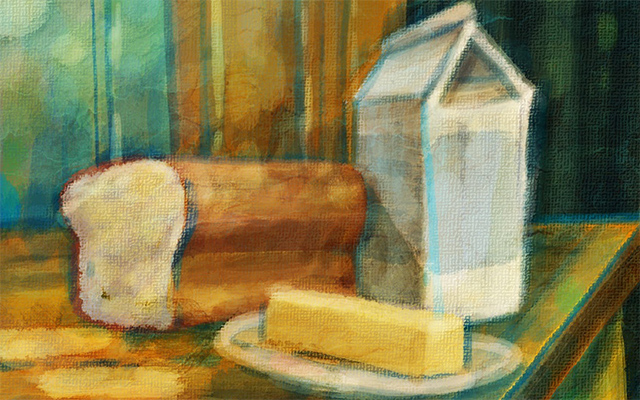Everyone knows the location of the convenience stores that are closest to home. You also know the location of the convenience stores that are closest to work. You know which ones you like to visit and which ones you avoid, because we all do some mental sorting and filtering when it comes to choosing one.
Is it clean? Are there unsavory sorts loitering around the front of the building? Is their gas a good price, or are they higher than most? Considering 80 percent of all fuel in America is sold by convenience stores, the last question is asked a lot. Is the clerk at the counter friendly or surly? Is the place well lit? You can modify that checklist, but, chances are, our filters are pretty similar.
We all use convenience stores because they’re convenient. It’s a lot easier to grab a loaf of bread or a quart of milk at the convenience store than it is to go to the supermarket, park, walk miles to find what you need, stand in line and then drive out of the parking lot. We perceive our time as having value. Thus, even though the milk and bread might be a bit higher in price at the corner store than at the supermarket, we don’t care. The slightly higher cost is a small price to pay for the convenience…a small price for saving 20 minutes by not going to the supermarket.
One truism about convenience store operators is this: They understand how to pull in, and sell to, their market. They know they can charge more for a Slim Jim, more for a six-pack and more for potato chips than the supermarket can. They also know the draw they have with us, the public, is the quick availability—and the affordable price—of fuel. They all stay within a few cents of each other on gas, and they make up the difference on the small items where a higher price doesn’t impede sales.
Independent music stores and small music retailers would do well to examine the convenience store model and consider how it might apply to their own business. The mantra of the small store in recent years has been sounding something like this: “How can we sell ABC for a profit when it costs us $3.50 and the online monster-of-the-moment is selling ABC for $3.25, with no sales tax and free shipping?” Feel free to substitute anything into the ABC slot: strings, capos, straps, tuners, etc. Accessories with no MAP are fertile ground for the Internet demolition crews…the masters of the race to the bottom.
If you’ve been feeling that way, then back up for a moment. Remember the convenience store model. You can sell ABC at a decent margin (not the specious MSRP but, rather, a price that builds in a decent margin) by becoming a music convenience store. When folks need or want a set of strings, they want them right now, not in three or four days. You’ve got those strings available right now. That means you’ve got the convenience aspect covered. Now, how about the rest of the filtering? Is your store well lit and staffed by friendly folks? Are customers greeted with a smile when they enter?
Here’s one: Are your big items (guitars, keyboards, etc.) priced at or near MAP? That’s the analog to posting a fuel price. Say everyone knows a certain model guitar sells for $699 (MAP) because they’re all over the Internet at that price. If a customer sees that the in-store model you have is also $699, he’ll most likely think all your prices are probably OK, right?
Folks who frequent music stores (or music Web sites) have a general knowledge of what some items usually cost. That’s at least true of the items they’ve been checking out recently. They have gotten used to seeing MAP on specific models. So, when they see that item in your store, it has to be at or near MAP. If they see an item in your store that they aren’t familiar with, you can be sure they will note your price and check it against online prices. If you aren’t at or near MAP, that’s the equivalent of being 20 cents over everyone else at the fuel pump in the convenience store world.
Want to see how this idea looks to your customer? Google one of your serialized items—one with an enforced MAP—and then look at your price and compare it to the online prices you see. Whom would you buy from? Even if you’re at MAP already, the Internet seller still has the advantage of no sales tax and free shipping. So, you have to overcome that by passing the filters we talked about earlier. Having a neat store, a friendly staff and a welcoming vibe go a long way toward making you the leading contender in completing the sale. It’s hard for a Web site to overcome a handshake, a smile, an offer of fresh coffee and a hands-on demo. If you make the sale, you just beat your competition at the pumps. Well done!
On smaller-ticket items (e.g., accessories, non-serialized products), most folks don’t do a lot of price checking. They need it, you have it and the bigger-ticket items have already confirmed your prices are OK. They feel comfortable grabbing what they need from your store. That’s the bread-and-milk equivalent for your business. Your customers won’t mind paying a bit more for the convenience you offer. Again, keep in mind that you must pass the filter test just to get them in. Once that’s done, though, having what they want will usually make the sale.
In the end, we (of course) aren’t convenience stores. However, we are stores that can offer convenience, and for a better margin than conventional wisdom might have led us to believe. Just as long, that is, as we make sure our stores pass the filter test.
Happy trails….


